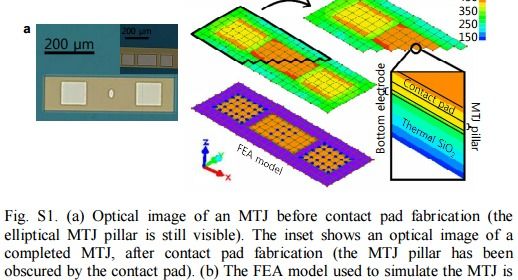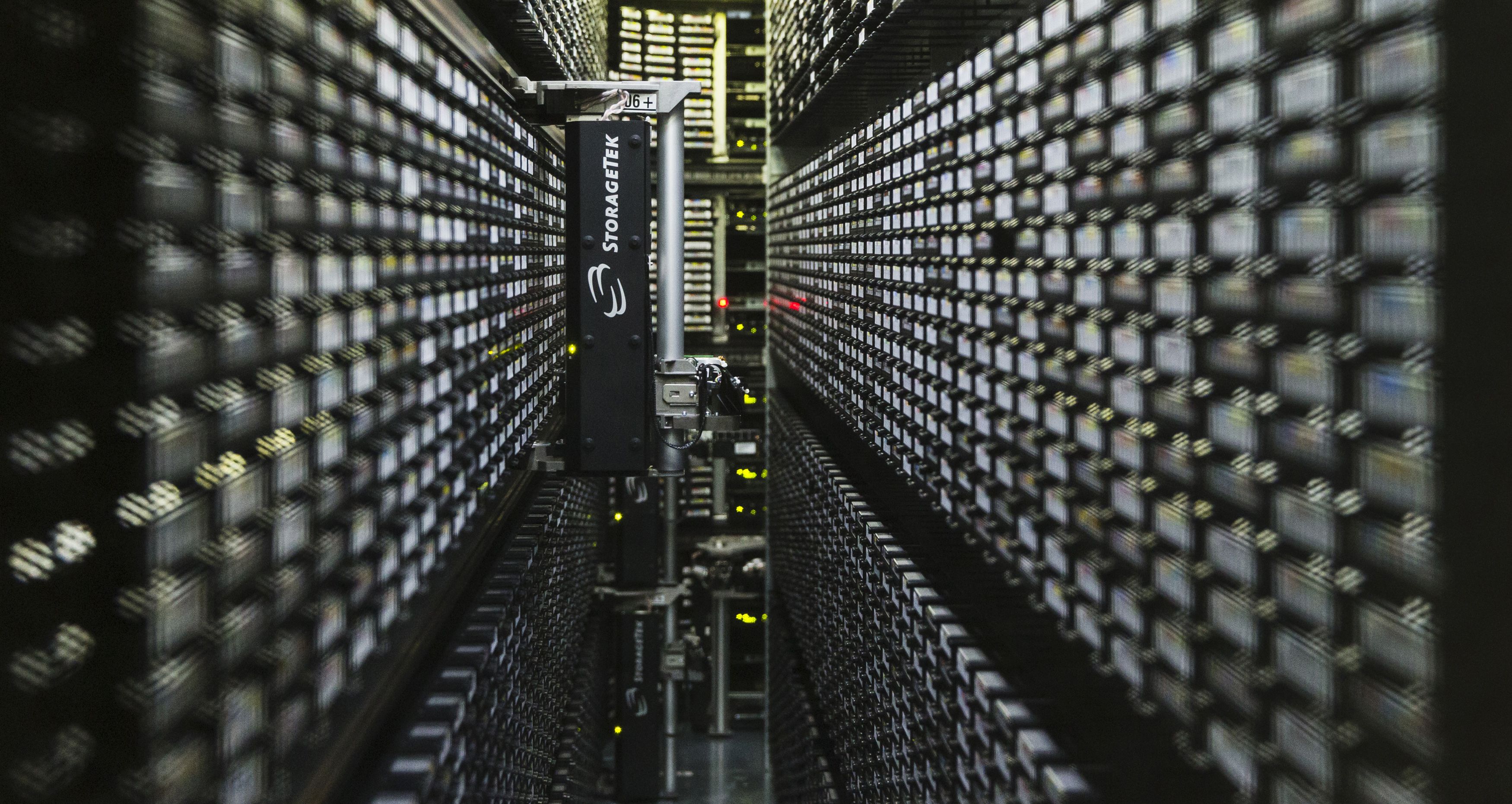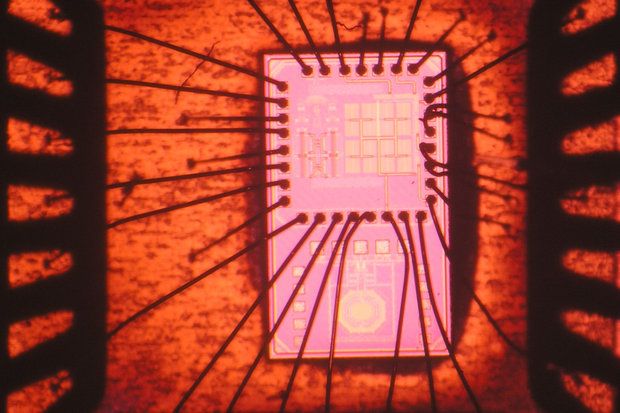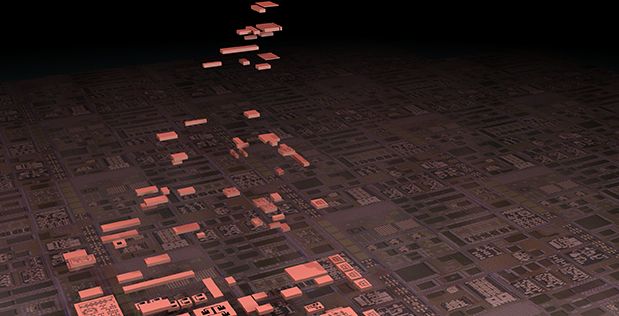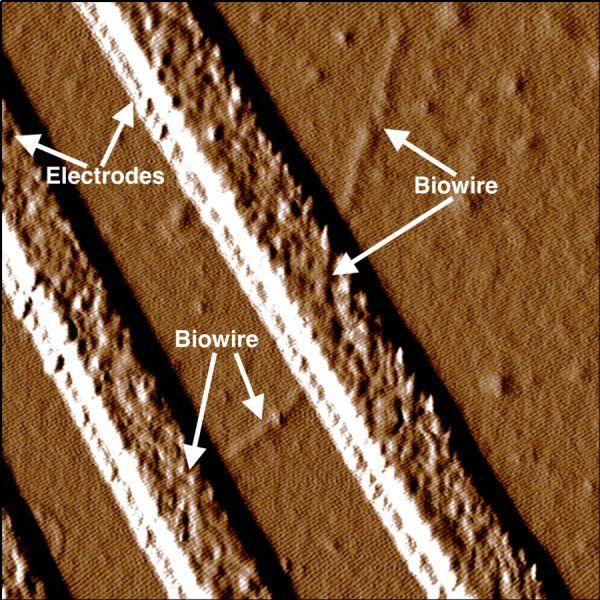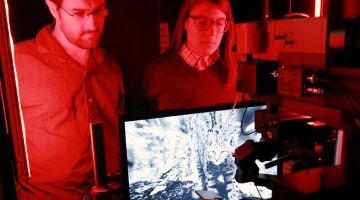Archive for the ‘computing’ category: Page 771
Jul 19, 2016
Dropbox open-sources Lepton, a compression algorithm that cuts JPEG file size
Posted by Shailesh Prasad in categories: computing, information science
Cloud syncing and sharing software company Dropbox today announced that it has released an image compression algorithm called Lepton under an Apache open source license on GitHub.
Lepton can both compress and decompress files, and for the latter, it can work while streaming — that is, files can be expanded back into full size as they are being sent over the network. So Lepton is important for user experience, given how it can more quickly transfer data and show content. But at the same time, it has an impact on the data center infrastructure where files often end up.
“We have used Lepton to encode 16 billion images saved to Dropbox, and are rapidly recoding our older images. Lepton has already saved Dropbox multiple petabytes of space,” Dropbox software systems architect Daniel Reiter Horn wrote in a blog post.
Continue reading “Dropbox open-sources Lepton, a compression algorithm that cuts JPEG file size” »
Jul 19, 2016
Researchers develop plastic flexible magnetic memory device
Posted by Klaus Baldauf in categories: computing, engineering, health, military, robotics/AI, wearables
It looks like a small piece of transparent film with tiny engravings on it, and is flexible enough to be bent into a tube. Yet, this piece of “smart” plastic demonstrates excellent performance in terms of data storage and processing capabilities. This novel invention, developed by researchers from the National University of Singapore (NUS), hails a breakthrough in the flexible electronics revolution, and brings researchers a step closer towards making flexible, wearable electronics a reality in the near future.
The technological advancement is achieved in collaboration with researchers from Yonsei University, Ghent University and Singapore’s Institute of Materials Research and Engineering. The research team has successfully embedded a powerful magnetic memory chip on a flexible plastic material, and this malleable memory chip will be a critical component for the design and development of flexible and lightweight devices. Such devices have great potential in applications such as automotive, healthcare electronics, industrial motor control and robotics, industrial power and energy management, as well as military and avionics systems.
Continue reading “Researchers develop plastic flexible magnetic memory device” »
Jul 19, 2016
World’s Smallest Hard Drive Writes Data Atom-By-Atom
Posted by Karen Hurst in categories: computing, nanotechnology, particle physics
Meet the world’s smallest hard drive.
Dutch scientists have developed a unique solution to deal with the data storage problem. By manipulating single atoms, researchers have created the world’s smallest hard drive capable of storing 1 kilobyte of data (8000 bits) in a space under 100 nanometers across. The technology means that all the books in the world could be stored on a device the size of a postage stamp.
In a study published Monday in the journal Nature Nanotechnology, scientists from the Technical University of Delft (TU Delft) said that they have created an atomic hard drive with a storage density that is 500 times greater than current hard drive technology.
Continue reading “World’s Smallest Hard Drive Writes Data Atom-By-Atom” »
Jul 19, 2016
DARPA tackling reusable, modular chipset technology
Posted by Karen Hurst in categories: computing, electronics
More information on DARPA’s efforts in build new interface standards for modular design & practical circuit blocks.
Is it possible to develop chip technology that combines the high-performance characteristics of ASICS with the speedy, low-cost features of printed circuit boards?
Scientists at the Defense Advanced Research Projects Agency this week said they were looking for information on how to build interface standards that would enable modular design and practical circuit blocks that could be reused to greatly shorten electronics development time and cost.
Continue reading “DARPA tackling reusable, modular chipset technology” »
Jul 19, 2016
Is MIND-CONTROL the future of warfare?
Posted by Karen Hurst in categories: computing, drones, military, neuroscience, robotics/AI

Although BMI is nothing new; I never get tired of highlighting it.
Now the group has come up with a way for one person to control multiple robots.
Jul 19, 2016
Another Big Shrink: Tiling Chiplets into Next-Generation Microsystems
Posted by Klaus Baldauf in categories: computing, robotics/AI, transportation
Open the hood of just about any electronic gadget and you probably will find printed circuit boards (PCBs)—most often in a leaf-green color—studded with processing, memory, data-relaying, graphics, and other types of chips and components, all interconnected with a labyrinth of finely embossed wiring. By challenging the technology community to integrate the collective functions hosted by an entire PCB onto a device approaching the size of a single chip, DARPA’s newest program is making a bid to usher in a fresh dimension of technology miniaturization.
“We are trying to push the massive amount of integration you typically get on a printed circuit board down into an even more compact format,” said Dr. Daniel Green, manager of the new program, whose acronym, “CHIPS,” is itself a typographic feat of miniaturization; the program’s full name is the Common Heterogeneous Integration and Intellectual Property (IP) Reuse Strategies Program. “It’s not just a fun acronym,” Green said. “The program is all about devising a physical library of component chips, or chiplets, that we can assemble in a modular fashion.”
A primary driver of CHIPS is to develop a novel, industry-friendly architectural strategy for designing and building new generations of microsystems in which the time and energy it takes to move signals—that is, data—between chips is reduced by factors of tens or even hundreds. “This is increasingly important for the data-intensive processing that we have to do as the data sets we are dealing with get bigger and bigger,” Green said. Although the program does not specify applications, the new architectural strategy at the program’s heart could open new routes to computational efficiencies required for such feats as identifying objects and actions in real-time video feeds, real-time language translation, and coordinating motion on-the-fly among swarms of fast-moving unmanned aerial vehicles (UAVs).
Jul 19, 2016
Atomic data storage is still way off from practicality — 500 Terabits per square inch at −196˚C in a vacuum chamber
Posted by Klaus Baldauf in categories: computing, particle physics

Every day, modern society creates more than a billion gigabytes of new data. To store all this data, it is increasingly important that each single bit occupies as little space as possible. A team of scientists at the Kavli Institute of Nanoscience at Delft University managed to bring this reduction to the ultimate limit: they built a memory of 1 kilobyte (8,000 bits), where each bit is represented by the position of one single chlorine atom.
“In theory, this storage density would allow all books ever created by humans to be written on a single post stamp”, says lead-scientist Sander Otte.
Jul 18, 2016
‘Green’ electronic materials produced with synthetic biology
Posted by Karen Hurst in categories: bioengineering, biotech/medical, computing, nanotechnology, solar power, sustainability
Biowire.
Researchers led by microbiologist Derek Lovely say the wires, which rival the thinnest wires known to man, are produced from renewable, inexpensive feedstocks and avoid the harsh chemical processes typically used to produce nanoelectronic materials.
Lovley says, “New sources of electronic materials are needed to meet the increasing demand for making smaller, more powerful electronic devices in a sustainable way.” The ability to mass-produce such thin conductive wires with this sustainable technology has many potential applications in electronic devices, functioning not only as wires, but also transistors and capacitors. Proposed applications include biocompatible sensors, computing devices, and as components of solar panels.
Continue reading “‘Green’ electronic materials produced with synthetic biology” »
Jul 18, 2016
Brain-data gold mine could reveal how neurons compute
Posted by Karen Hurst in categories: computing, genetics, neuroscience
Inspired by the large-scale sky surveys with which astronomers explore the cosmos, neuroscientists in Seattle, Washington, have spent four years systematically surveying the neural activity of the mouse visual cortex. The Allen Brain Observatory’s first data release, on 13 July, provides a publicly accessible data set of unprecedented size and scope, designed to help scientists to model and understand the human brain.
The project is part of an ambitious ten-year brain-research plan announced in 2012 by the Allen Institute for Brain Science. Designed to catalogue neurons and their electrical characteristics in minute detail, the initiative aims to enable new insights into how perception and cognition arise.
To compile the brain observatory’s first data set, researchers used a specialized microscope to record calcium waves that occur when neurons fire, sampling activity in 25 mice over 360 experimental sessions, while the animals viewed a battery of visual stimuli such as moving patterns of lines, images of natural scenes and short movies. The data set so far includes 18,000 cells in 4 areas of the visual cortex, making it one of the largest and most comprehensive of its kind. The set also includes information about each neuron’s location and its expression of certain genetic markers. At 30 terabytes, the raw data are too large to share easily, but users can download a more manageable processed data set, or explore it online.
Continue reading “Brain-data gold mine could reveal how neurons compute” »


